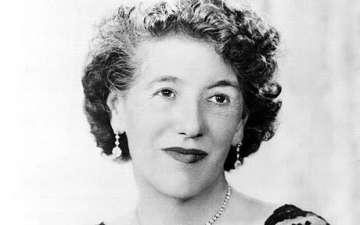Happy Birthday Enid Blyton, the writer who filled our childhood with adventurous stories
One woman with a typewriter did more to shape the imaginations of generations of child readers than anyone else -- and still does.

Do you remember wanting to find what adventures Jo and his sisters get up the Faraway Tree? What mystery the Five Find-Outers (and Buster the dog), or the Famous Five stumble into the their summer vacations? Or the escapades of Darell and her friends at school, of Noddy in Toyland or that rascally trickster Brer Rabbit?
One woman with a typewriter did more to shape the imaginations of generations of child readers than anyone else -- and still does.
Even in India, anyone who studied in school with fairly-stocked libraries, say between the 1950s and 1980s and was fond of books, would recall being guided to the oeuvre of Enid Blyton, progressing from the fairy tales to the school stories to the mysteries, before stepping into the slightly more 'adult' Hardy Boys/Nancy Drew.
Also Read: Poet and writer, Vijay Nambisan dies at 54
In her roughly four-and-a-half-decade career, Blyton, whose 120th birth anniversary is on Friday (August 11), wrote over 760 books, which still sell millions of copies and have been translated into 90 languages, besides a series of newsletters for her readers and magazine articles. In her heyday, she was capable of writing 50 books a year, leading to allegations that she employed ghost-writers.
Blyton, however, was a inspired and industrious storyteller.
"I shut my eyes for a few minutes, with my portable typewriter on my knee -- I make my mind a blank and wait -- and then, as clearly as I would see real children, my characters stand before me in my mind's eye... The first sentence comes straight into my mind, I don't have to think of it --- I don't have to think of anything," she told psychologist Peter McKellar, who asked her imaging techniques for his research project.
But there was much more to Blyton (1897-1968). Besides her fantastic imagination, she could adroitly adapt real-life inspirations -- a grove of waving trees outside one of her homes inspired the Enchanted Wood, Superintendent Jenks of the Five Find-Outers was based on a policeman from her hometown who also got promoted the same way) and was far more creative than she is given credit for.
Also Read: Help us bring little Aadya home
One thing that generally gets overlooked was her extensive love for nature, which she also tried to inculcate in her young readers, teaching them everything from planting a garden to identifying birds.
The natural world features in some of her works, like the Round the Year with Enid Blyton series (all 1934), on the flora and the fauna in each of the four seasons or the challenges of working on a farm (the Willow Farm/Mistletoe Farm series et al). Then are those featuring animal protagonists -- be it the anthropomorphic characters of the Brer Rabbit series to Shadow the Sheepdog. Then the Adventures of Pip, feature a young pixie introducing us to the quirks of nature from hibernation to pollination.
And while most of her stories, those set in the mortal world that is, stress and celebrate family ties, she did not have a very stable life herself. While her early childhood was fairly happy, as her father Thomas Carey Blyton, got her interested in nature and passed onto her his interest in music, art, literature and gardening, (though her mother Theresa Mary was never close to her eldest child), the shock came when their marriage collapsed when Enid was 13 and he abandoned them.
Blyton, during her studies and then during her teacher's training, never kept much contact with either parent or attend their funerals, though in later life, she spoke about them positively. Her own married life was not smooth too -- with Winston Churchill being a indirect cause.
While her first husband, soldier-turned-publishing executive Hugh Pollock, helped her writing career getting off, their marriage began fraying in the mid-1930s when the World War I veteran turned to drink to tamp down his trauma -- reignited when Churchill told him that another war was coming.
After they separated, Enid was less than fair towards him, stopping him from seeing their two daughters. (Duncan McLaren in "Looking for Enid" suggests obnoxious, bumbling village policeman, Mr Goon, was a subtle revenge at him). Her second marriage to surgeon Kenneth Darell Waters -- whose name inspired her schoolgirl heroine (Darell Rivers whose father is a doctor) was successful but childless.
And while Enid's elder daughter Gillian remembered her mother fondly, the second Imogen was less than kind.
And then Blyton had more than her usual share of detractors -- in her heyday, BBC dismissed her work as "devoid of literary merit" to the 1960s accusations of simplicity, recycled plots, as well as sexism, racism, elitism, and the like. Then came political correctness, whose imposed changes raises more doubt as to what its purveyors keeping thinking about the effect on impressionable minds.
Happily, millions of readers continued to read her without any adverse effects.
For more lifestyle news, follow our Facebook page